What worked for me might just work for you
Eating healthier should not be a short-term effort but a long-term commitment to stay healthy, fit and full of energy to maintain a healthy body and mind.
In this blog I will talk about how I started a healthier lifestyle from trigger to establishing better sustainable habits.
Every change needs a trigger and a long term goal
We all know that we should eat healthier, but our standard Western diet gives us too many convenient, tasty and addictive options and tempts us to make unhealthy choices on a daily basis. Sometimes we might opt for a more wholesome gourmet burger with sweet potato fries from a fancy new burger restaurant instead of going to the cheaper fast food joint around the corner, but did we really change our nutrient intake for the better? Maybe a bit, probably not much, but it could be great with the right ingredients! And there lies the problem: How can we know what goes into our food? The only way to know for sure what we are eating is to cook ourselves. I know, we are all busy. Who has time to prepare meals on a daily basis? Well, I learned first-hand how it feels when my body told me to stop or else. It did not feel good fearing for my life! I profusely apologized to my body, begged for more time with my family and promised to make a change.
The Trigger – Getting Personal
If it causes discomfort (physically or psychologically), take it seriously and act on it!
My trigger was a health scare on June 29, 2020, with all the signs of a heart attack that thankfully was a false alarm. Your trigger could be similar or anything from overhearing a rude comment about your weight, to not fit in your favorite dress, or maybe to not being able to participate in a family activity because you just don’t have enough stamina for a 2 hour uphill hike to that breathtaking waterfall. No matter what it is, you know you want to change, but where to start?
Pharma for symptoms or a change for better health?
I was lucky, my symptoms were not a heart attack, but on top of my high blood pressure I now added high cholesterol to my repertoire of ailments, and another medication I did not want to take. The hospital physician was very clear: I would have to take this medication for the rest of my life “like millions of other people who do not have a problem with doing that”. The alternative would be to completely change my lifestyle and “who wants to do that?” (her actual words) to which I nodded, went home and changed my lifestyle. Her words did not ring well at the time, but in hindsight I was completely shocked. How can a serious health professional only prescribe more medication, which simply treats symptoms but not the cause of chronic disease, which, with no fundamental changes in habits will only lead to more disease and ultimately death? I finally concluded that we cannot blame physicians like her because that is what is taught in traditional medicine. Of course, traditional medicine plays a very important role for treating acute diseases like pneumonia, other bacterial infections, injuries, or cancer treatments for which we need drugs. What I am talking about are chronic diseases like heart disease, type 2 diabetes, dementia, and certain mental illnesses. The scientific research is overwhelming and we can prevent and cure many of these diseases simply by adjusting our lifestyle choices. Physicians will only treat symptoms – it is up to us to combat the causes of chronic diseases.
1. Research
Get quality information
There are countless Youtube videos and articles on the internet about how to lead a healthier life, how to prevent and reverse chronic illnesses, and how to keep a sharp mind. Some of it is straightforward but most of it is contradictory and confusing. So I started at the beginning: education through a reputable university. I earned 2 certificates in nutrition, one from the Wageningen University in the Netherlands (“Nutrition, Heart Disease and Diabetes”) and one from the University of Canterbury in New Zealand (“Mental Health and Nutrition”).
If you don’t want to go this far, just take all the information you find on the internet with a grain of salt and stay critical. Trust the science. It is a never-ending work in progress, constantly changing with more and better information, new studies, new publications. The answers to our personal choices are vastly different, what is right for me is not always right for you, but the foundation is the same: Eat better, exercise (at least 150 minutes per week according to the American Heart Association) and try to get between 7 and 9 hours of sleep a night (well, that’s a whole different chapter, but at least try). You might want to do “a complete 180” like me or begin at a slower pace with a few changes to start with.
2. Start an Exercise Routine
Exercise can have a positive impact on our eating habits, too!
If you are a bike messenger you are covered! But how about those of us who sit for most of the day? I will not tell you that this is easy, it is not. You have to find your own way, a way that works for you, but there are certain steps that helped me and people I know:
- Find a routine: I personally start every day with a 30 minute exercise routine which is a Youtube video by Leslie Sansone to which I have added some of my own interpretations including weights. That works for me. Every day! Maybe for you the best routine will be joining a gym or doing crossfit 3 times a week for an hour. Maybe just a nightly brisk walk around the neighborhood is perfect. If you quit after a few days or weeks you need to try something else until you find what fits you best. The most important step is to build it into your weekly schedule like going to work and eating. Do not leave it for when you have time or let other things get priority. Your health should have priority, exercise is a big part of it, prioritize it!
- Do not give up easily! It is hard to start, it is harder to stick with it. A temporary setback should not throw us off. If you feel too sick to exercise, just skip and then get into it again. Breaks are ok, not going back is the problem. I don’t consider it a break but a delay.
- Start slowly! Don’t try to follow a difficult dance routine to start with, it might leave you discouraged. A simple 30 minute low impact cardio routine or a nightly walk are great ways to start.
- Find an exercise buddy. If you decide to walk at night or join a gym, it helps to do it with a friend or family member. You can help each other to stay motivated. There will always be times when you feel like giving up and a dedicated exercise buddy will not let you.
The benefits of exercise are indisputable. If we do not exercise it will have dire consequences in the long run. Exercise helps shed unwanted weight, it helps our brains, our hearts, our bones, etc., etc.
Exercise also has another benefit, at least in my case. Putting in all the effort and sweat, I tend to want to eat healthier so as not to waste all the work, a psychological effect that is supported by the release of hormones which make us want to be more active and lower the cravings for junk food and defeat overall sluggishness.
3. Evaluating And Adjusting Our Eating Habits
“Let Food Be Thy Medicine and Medicine Thy Food” – Hippocrates
Food has the power to prevent and cure disease or make us sick and even kill us. The choice is ours!
I have always been a foodie with interest in nutrition, trying to eat somewhat healthy. I failed for a long time! When I was admitted to the hospital on June 29, 2020, I weighed over 200 lbs, had high blood pressure and high cholesterol. I was on the fast track to a premature death by food. I am convinced of that. It took a complete overhaul of my lifestyle and 3 months to get off cholesterol medication on my own under the watchful eye of my physician. Most importantly, it was not just a diet but a complete overhaul of my lifestyle, based on hours of research, a lifestyle which I intend to maintain for the rest of my life.
As I see it, there are two ways to adjust our diet:
- A complete change like I did, especially if there is urgency, or
- a more subtle incorporation of healthier options in exchange for unhealthy ones.
Number 1 means a complete diet change based on healthy choices whereas number 2 uses current eating habits as a base with a ]slow elimination of junk food and incorporating more vegetables and fruits. Just add one vegetable to your stew and replace the high sugar dessert with a fruit sorbet. Serve water with dinner instead of soda and fruit juices. Keep reading and watching and incorporate more changes over time. Whatever you do, the next step is crucial:
Eliminate highly processed foods and start eating real food!
What exactly is processed food? Processing could be as simple as freezing, that is not unhealthy. That is minimally processed as compared to highly processed, which means the food has additives like preservatives, coloring or chemicals to extend shelf life, improve appearance, or to make it more addictive like with MSG (monosodium glutamate) and sugar. Many highly processed foods are very high in sodium and have added sugar. Simply put, highly processed food is the poison that can kill you.
We need to cook more and teach our children to cook
The only way to be sure about what is in the food we eat is by making it ourselves. Here a few things we should be doing:
- Using quality ingredients like extra virgin oils, organic leafy greens, 100% grass fed meat, eggs from organic free range chickens.
- Learning where our food comes from and using locally sourced food if possible.
- Avoiding buying pre-packaged foods and prepared foods.
- Choosing restaurants with healthier options or avoiding them altogether at first. As we learn which types of food to eat we are able to better evaluate restaurant food.
- Most of all, we should stop rewarding children with unhealthy foods! (I did it and I thoroughly regret it, but I didn’t know better!) Instead of taking the kids to the ice cream parlor for good behavior or after success, experiences like visiting a farm to pet the animals and buying fresh produce and eggs, or taking them to the park with their friends and providing (child-approved) healthy snacks.
Food labels are a wealth of information
If the ingredient list is too long, mostly filled with ingredients most people can’t even pronounce, it is probably not good for us. Added sugars and high fructose corn syrup are a no-no and sometimes just comparing the labels of different products can tell us a lot. It is often quite obvious which item to buy once you compare what is in it. It is a learning process and there is no course in food label deciphering. I have not met one person yet who understands it all. Using some common sense and gut feeling helps.
How about bread?
Grains are an important part of a complete diet. I try to choose whole grains with sprouts or sourdough. I buy either an organic sprouted bread or an organic sourdough bread at a local bakery, where I trust that they use only the best ingredients. If you live in Miami check out the sourdough breads at Madame Lecker Bakery (www.madamelecker.com).
Below are the ingredient lists of 3 random pre-packaged breads from the local supermarket:
From top to bottom: first one is Greenwise Organic Sprouted Multigrain, in the center a popular 100% whole wheat and last a popular brand white bread. I sometimes buy the first one but eat it in moderation.
Eliminating or drastically reducing our sugar consumption is crucial
Yes, sugar is bad, no matter which form it comes in. We need to eliminate or at least limit the amount of pastries we eat and watch out for hidden sugars. Sugar, together with MSG, is a favorite additive in the food industry to get us hooked, so read those labels! Giving up sugar is hard for many, but it is one of the most important steps to better health. We cannot raise our children on sugar – the result is disastrous! Replacing sodas and fruit juices with water and tea and not using cookies or cake to reward good behavior or to celebrate is a great way to get healthier. A good start is to replace the cookie tray with a fruit tray.
Healthy fats are key to better health
If you want to use butter then maybe choose a 100% grass fed butter. I personally only use extra virgin olive oil and extra virgin avocado oil for all my cooking and baking. The worst are processed vegetable oils, canola oil, sunflower oil, basically everything that is not extra virgin cold pressed or at least expeller pressed (for higher heat cooking like sautéing). Highly processed oils contain chemicals and are exposed to very high heat. Extra virgin oils are simply pressed. Expeller pressed oils are subjected to some heat but do not contain chemicals. Read the labels. Also read my blog “Using Healthy Fats For Delicious Recipes”.
What to buy organic?
There are many lists online with the “Dirty Dozen” and “Clean 15”, which also changes yearly. It is a list of fruits and vegetables which were tested for residues of pesticides and other harmful chemicals. As a rule of thumb I buy all leafy greens, oats, and fruits and vegetables of which I eat the skin (like apples) organic, but the ones I peel, especially with a thick skin (like avocados), I buy regular (not organic).
Do you need to eat vegetarian or vegan?
I definitely think that the answer is no. I am not a vegetarian or vegan but for health and humanitarian reasons I have reduced my meat and dairy intake and keep a close look at where it comes from. I also do not eat highly processed meats and usually eat fish, but on occasion I have a lean piece of 100% grass fed meat.
When, on occasion, I eat in a restaurant I ask for the vegan options. It eliminates all dishes with unhealthy saturated fats like butter and cream hidden in sauces and used for preparation. I do ask what type of oils they use, i.e. I would rather go with a tomato sauce than a pesto made with sunflower oil.
4. Prioritize Your Health, Don’t Procrastinate
Start thinking about food as your fountain of youth
Don’t wait until you have a health scare, start now! By switching to good nutritious food and exercising daily I have shed over 40 lbs so far without trying. It is a by-product of getting healthier and it just works. It is not a diet, it is a change of lifestyle that will stay with me, no matter where my final weight will be. It is a choice to be healthier. I now can easily jog a few miles, I think clearer and am more focused on anything I do.
“Health Food” can be very tasty
Keep in mind that healthy food does not mean you have to live off salads and grilled fish, although those can be very tasty. Watch out for recipes where I switch unhealthy ingredients with healthy choices and the result is tasty and surprisingly close to the original preparations. I have fooled people, it is really funny when they find out that they just ate “health food”.
The Reward: Losing weight and changed taste buds
Not only will a healthier diet help us maintain a healthy weight, switching to healthier options and eliminating sugar and highly processed foods have completely changed my taste buds. I no longer crave sugary desserts or fatty junk food. Seriously! I can look at a fast food burger without any cravings. I did eat a burger at my son’s house recently (a small one) which he made from 100% grass fed lamb. It was good and I enjoyed it, but do not crave more. I feel like my taste buds now demand fresh foods, more refined tastes and lighter varieties. I no longer feel deprived of what I used to crave but instead I am drawn to fresh unprocessed real food. Change can be good!
Check out more blogs on healthy living and also find healthy and tasty recipes on www.foodiewithpurpose.com

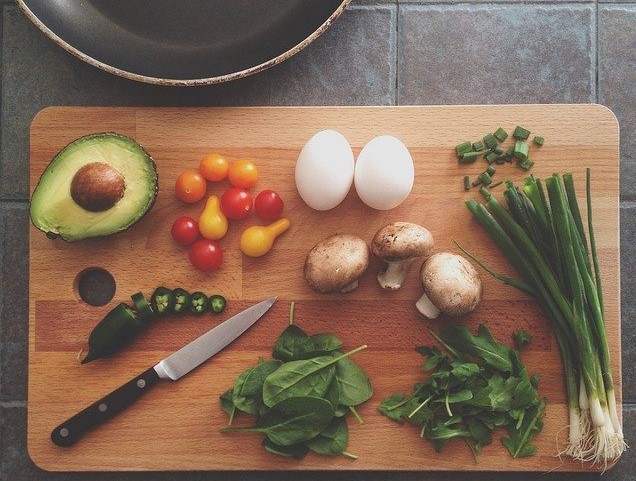

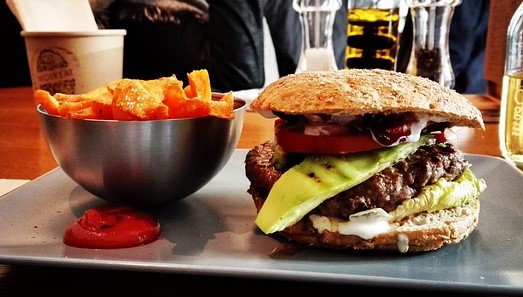

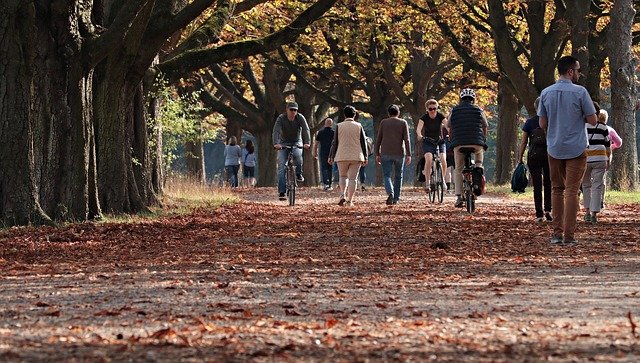
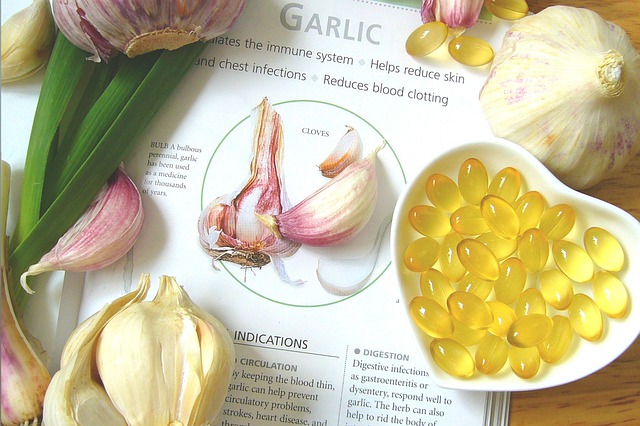
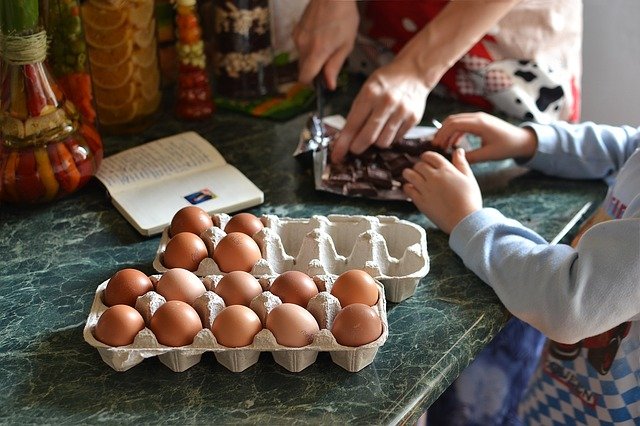

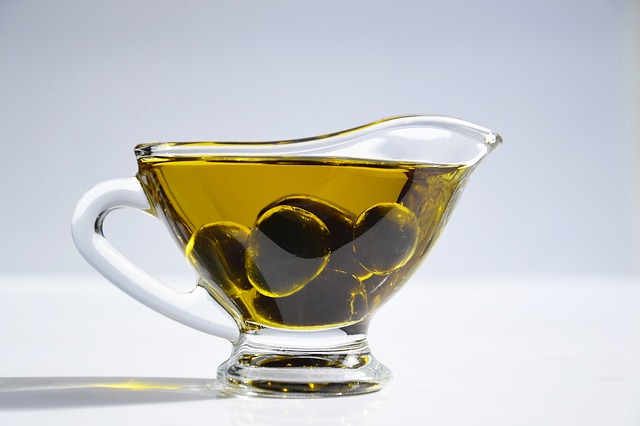
Michaele love your blog and all of the helpful and wise information on here. I have always tried to incorporate healthy food habits in what we eat. Never have been a fan of fast food and I agree that we are better off cooking our own food. This is half the battle in western society. Coming from a Spanish background my mom was huge on the olive oil vs deep fried foods. Her motto was “you eat to live, not live to eat”’. Keep up the great tips… good luck!
Thanks Yoly 🙂